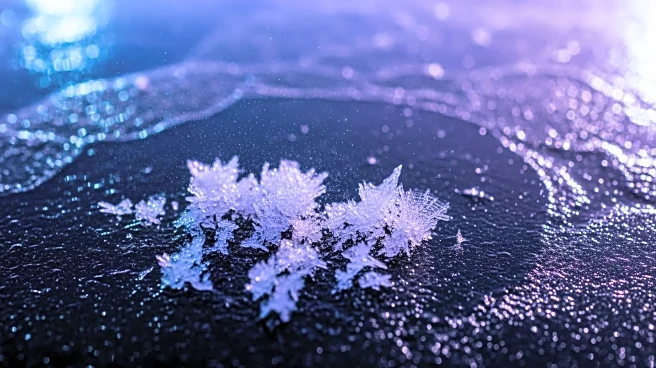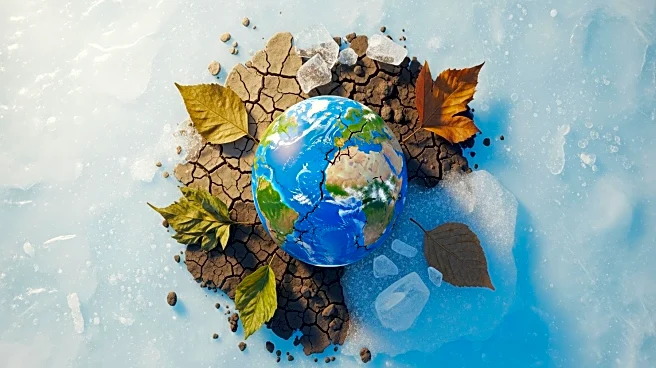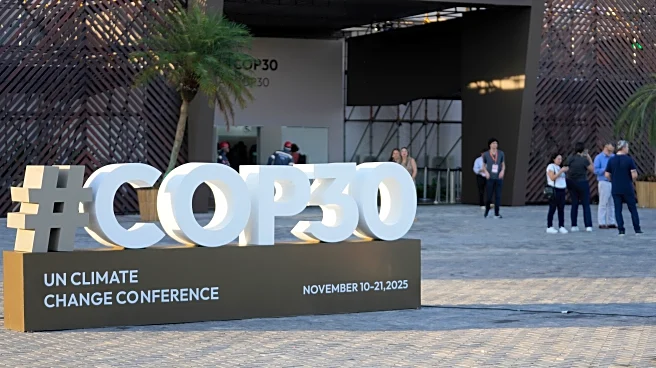What's Happening?
Researchers have used space dust, specifically helium-3-rich interplanetary particles, to study the history of Arctic sea-ice coverage. By analyzing sediment cores, scientists have reconstructed a timeline
of glacial changes over 20,000 years. The findings indicate that atmospheric warming, rather than ocean temperature, is a primary driver of sea-ice loss, suggesting that the Arctic may be melting faster than previously predicted.
Why It's Important?
This research highlights the sensitivity of the Arctic to atmospheric changes, emphasizing the urgency of addressing climate change. The rapid loss of sea ice could have significant global consequences, including shifts in marine ecosystems, changes in ocean productivity, and geopolitical tensions over new trade routes. Understanding these dynamics is crucial for developing effective climate policies and mitigating the impacts of global warming.
What's Next?
The study calls for continued monitoring of the Arctic's ice coverage and further research into the interactions between atmospheric conditions and sea-ice dynamics. Policymakers and scientists must collaborate to address the challenges posed by a rapidly changing Arctic, focusing on sustainable practices and international cooperation to manage the region's resources and environmental health.












